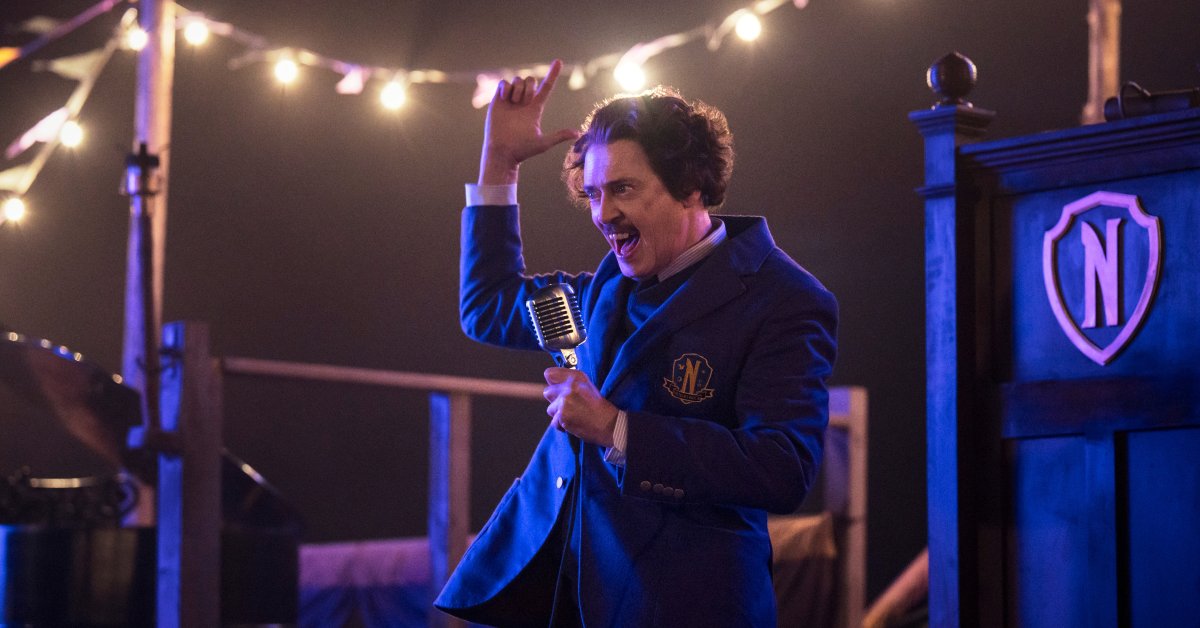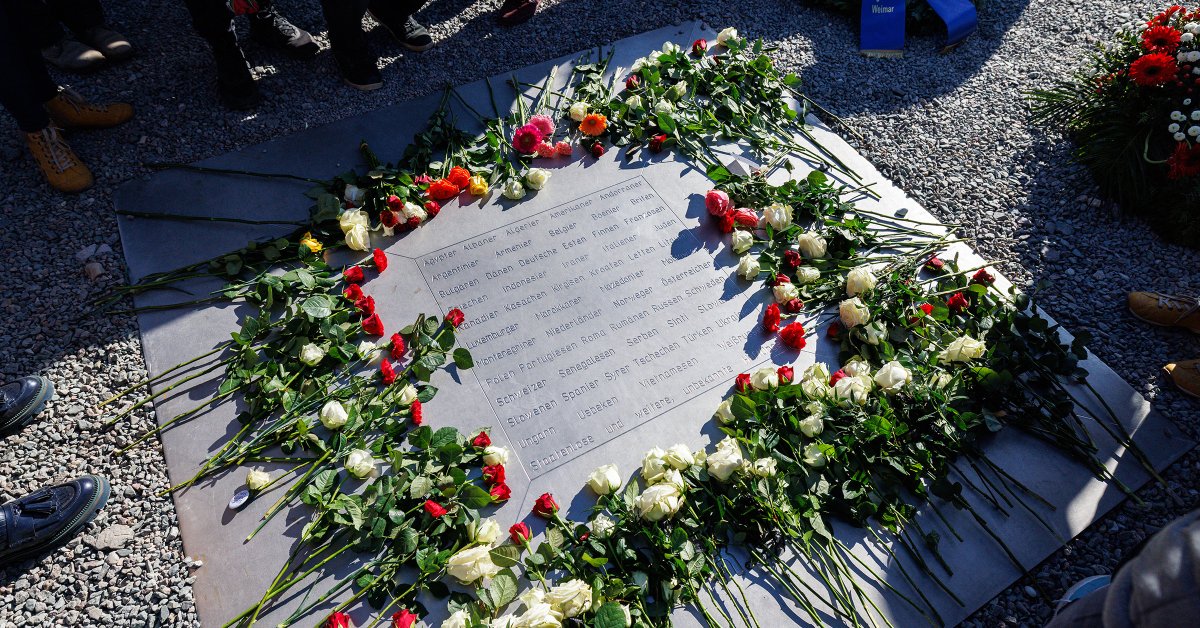When it comes to youth culture, nothing is more mainstream right now than outcasts. This is not an anecdotal observation—it’s a fact, borne out by the immense popularity of the teen-focused Addams Family spinoff Wednesday, whose first season tops Netflix’s list of its most-watched English-language shows of all time, with more than 250 million views. (The next two titles, Adolescence and Stranger Things 4, lag by over 100 million views apiece.) Melding horror and mystery with YA drama, it has made a global star of its 22-year-old lead, Jenna Ortega, whose cannily placed dance scene immediately broke TikTok. Wednesday Addams cracked the top 10 kids’ Halloween costumes the year after it debuted, second only to Barbie among name-brand female characters. All of which might suggest to adults that Wednesday is strictly for Gen Z.
Its first season certainly supported that impression. The setting—Nevermore Academy, a boarding school for paranormally gifted misfits—recalled Harry Potter’s Hogwarts. The plot put a dark but too rarely novel spin on standard coming-of-age tropes, as Ortega’s icy, psychic Wednesday navigated roommate troubles and a supernatural love triangle (see also: Buffy, Twilight, The Vampire Diaries). While those elements remain in Season 2, Wednesday, having saturated the Gen Z market, now feels like it’s working harder to entertain older viewers—particularly those of us who fondly remember ’90s pop culture. Well, it worked on this elder millennial. Parents, don’t tell your tweens, but the new episodes of Wednesday are secretly a gift to weird adults.

After a speed run through Wednesday’s summer vacation, which she naturally spent taking out a creepy serial killer played by Y2K spooky-kid icon Haley Joel Osment, Season 2 (whose first four episodes are now streaming, with the last four to follow on Sept. 3) opens with her return to Nevermore. Having vanquished the murderous alliance of her love interest Tyler (Hunter Doohan) and teacher Marilyn Thornhill (Christina Ricci), who had been conspiring against the school’s outcast denizens, she’s hailed as a hero. Which only makes her grumpier than usual. Adding to Wednesday’s foul mood is her family’s increased presence on campus. Her little brother, Pugsley (Isaac Ordonez), has matriculated as an awkward underclassman. And Addams matriarch Morticia (Catherine Zeta-Jones) has been recruited to raise funds for the academy—meaning, of course, that Morticia’s adoring husband, Gomez (Luis Guzmán), won’t be far away. Eventually there’s a spectacular grandmother in the mix. More on her later.
Although Wednesday’s perky werewolf roomie Enid (Emma Myers) inherits the love-triangle plot, while Pugsley and his roommate Eugene (Moosa Mostafa) get wrapped up in a deeply silly storyline involving a pet zombie, the family stuff is a nice respite from a Nevermore social scene that was always the show’s least inspired element. It also gives the wonderful Ortega, whose deadpan yet somehow tender performance carried the first season, a chance to play off of many talented older actors. This isn’t an entirely new thing for Wednesday, whose executive producer and director Tim Burton helped discover so many offbeat Gen X-ers. Season 1 also featured Zeta-Jones, Guzmán, and Ricci (a previous generation’s Wednesday Addams in two cult-classic ’90s movies), as well as Fred Armisen in the role of Uncle Fester and Gwendoline Christie as Nevermore’s principal. But this time, the adult Addamses are more integral to the story.

Now that it is, by many measures, the biggest show on TV, Wednesday creators and showrunners Alfred Gough and Miles Millar have the clout (also the budget) to really go wild with their casting choices. So Christie’s disgraced administrator is replaced by Steve Buscemi’s Principal Barry Dort, an outcast-pride advocate who craves Wednesday’s approval. Buscemi is, of course, famous for playing weirdos and alternative types; in one of his most beloved roles, he starred opposite Ricci as a lonely record collector in the 2001 film adaptation of Daniel Clowes’ sardonic coming-of-age comic Ghost World. The fantastically versatile Billie Piper, who has charmed geeks in Doctor Who and goths in Penny Dreadful, makes an intriguing foil for cello phenom Wednesday as the school’s new head of music. Her relatively minor role in the early episodes of the season seems likely to anticipate an increased presence in its second half.
Gough and Millar have moved to liberate the show from teen-drama clichés by expanding its world beyond the dating woes and questionable authority figures of Nevermore. Tyler’s imprisonment at the nearby Willow Hill Psychiatric Facility—whose grimy environs recall Batman’s Arkham Asylum, One Flew Over the Cuckoo’s Nest, and so many other fictional houses of psychological horrors—is the site of a promising new (but easily spoiled) subplot. There, Wednesday meets the unorthodox doctor overseeing his treatment, Rachael Fairburn, played by Westworld standout Thandiwe Newton. Appearing as Dr. Fairburn’s officious assistant, Judi, is none other than Heather Matarazzo, who entered the oddball hall of fame in 1995 with her portrayal of Welcome to the Dollhouse’s middle-school reject Dawn Wiener.

It’s all pretty delightful for those of us who are old enough to appreciate not just the referential casting, but also the just-campy-enough performances that Buscemi, Matarazzo, and the rest deliver. In that respect (and with apologies to Lady Gaga, who’s slated to appear in the back half of the season), no guest star is more apt than Joanna Lumley. Best known for her long-running role as the debauched, aging fashion victim Patsy Stone in the era-defining ’90s British sitcom Absolutely Fabulous, Lumley turns the diva dial to 11 as Morticia’s mortuary-mogul mother, Hester Frump. (Fun fact: Her Burton connection dates back to his 1996 adaptation of Roald Dahl’s ooky children’s book James and the Giant Peach.) Not that the performance is pure fluff. One of the season’s more resonant themes is mother-daughter strife; Grandmama’s estrangement from her daughter and affinity for Wednesday adds another layer of intergenerational mess. Also? For Patsy fans, it’s also nice to see Lumley back in a beehive.
Speaking of camp, the most enjoyable of the four episodes that dropped this week is one big Addams Family Values Easter egg. Riffing on Wednesday and Pugsley’s gloriously destructive journey to sleepaway camp in that 1993 movie, “Call of the Woe” sees Principal Dort shepherd his students to an overnight wilderness retreat he dubs Camp Outcast. (Gomez and Morticia are also present, as chaperones. You have never seen a tent like the one they construct.) The Nevermore kids soon encounter their ideal nemeses in a troop of normie paramilitary Boy Scout types who’ve reserved the camp for the same days. The only possible resolution to the double booking—because the two groups have no intention of sharing space—will be obvious to anyone who’s ever seen a summer-camp movie from the late 20th century: a color war.

I have no doubt that plenty of Gen Z Wednesday viewers have already devoured Addams Family Values and its predecessor and will get the callback. I’m sure they’ll also eat up all the new characters and settings, whether they recognize them or not. At the same time, I don’t think the new season quite resolves Gough and Millar’s confusion about what they want their series, which has its fingers in crime and horror and teen soap and family drama and dark comedy, to be; with such an overcrowded surface, it’s hard to achieve much depth. In its second season, however, what was once a show that relied almost exclusively on Ortega now has many more things going for it—one of the most welcome of which is genuine cross-generational appeal.








